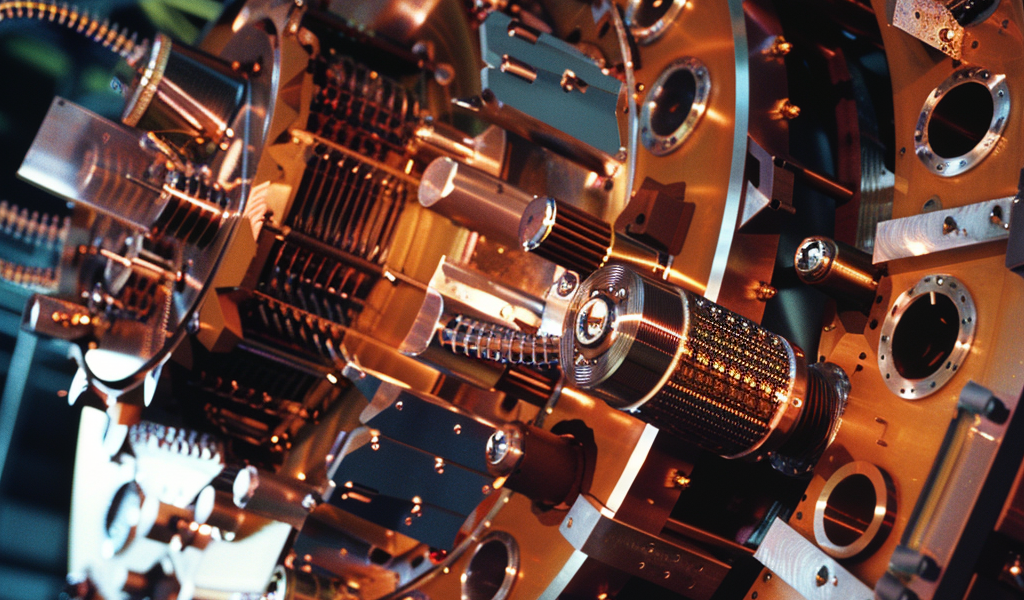Colossal Magnetic Field Detected in Nuclear Matter
February 23, 2024
Collisions of heavy ions briefly produced a magnetic field 1018 times stronger than Earth’s, and it left observable effects.
Researchers have observed the interaction between a state of matter known as a quark–gluon plasma (QGP) and a magnetic field. This observation of the effects of a magnetic field—which was 1000 times the strength of those on neutron stars—is a step toward a better understanding of the strong nuclear force that holds all of the particles together inside atomic nuclei. It also puts limits on the possible value of the QGP’s electrical conductivity, a property that informs models of the early Universe.
In normal matter, quarks are bound into multiquark particles, mainly protons and neutrons, by the strong nuclear force, which is carried by gluons. But in a QGP, quarks and gluons are free to roam. Microseconds after the big bang, theory predicts that the Universe was filled with a QGP. The early Universe may also have contained large electric and magnetic fields, which would influence the QGP’s motion and affect the structure of the early Universe.
Researchers at the Relativistic Heavy Ion Collider (RHIC) at Brookhaven National Laboratory in New York have been creating QGPs in collisions of pairs of heavy nuclei since 2000. These collisions are never perfectly head-on, so there is often a significant chunk of positively charged nuclear material from each nucleus that moves past the collision zone at high speed, which could generate a fleeting magnetic field as strong as 1018 gauss. (Earth’s field is about 0.5 gauss at the surface.) So RHIC’s nuclear collisions could provide an opportunity to study the interactions between a QGP and a magnetic field. Such studies could shed light on conditions in the early Universe and could also lead to new ways of probing the QGP’s properties to better understand how this exotic material behaves under a wide range of conditions.
Big detector for big nuclei. The house-sized STAR detector tracks the particles produced by quark–gluon plasmas generated in heavy-ion collisions.





